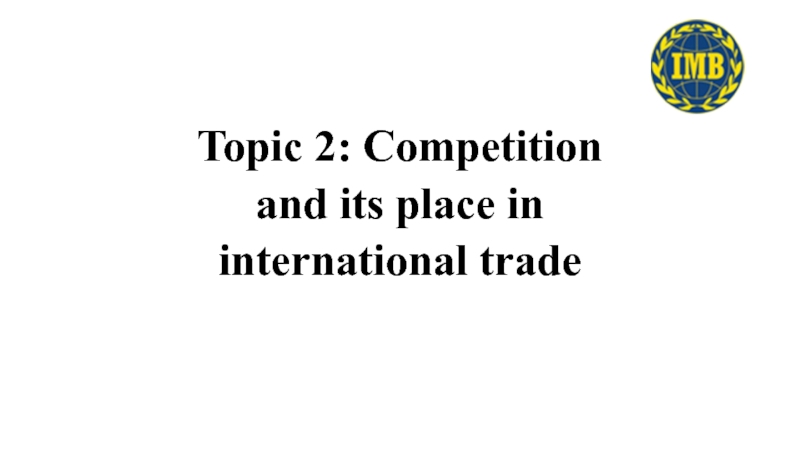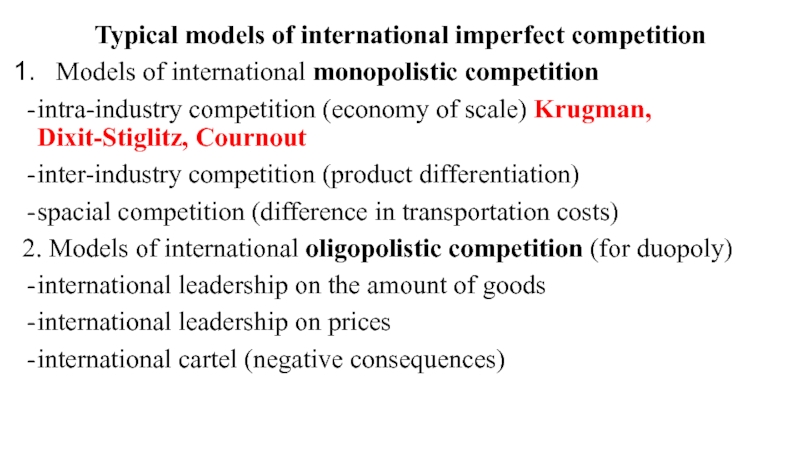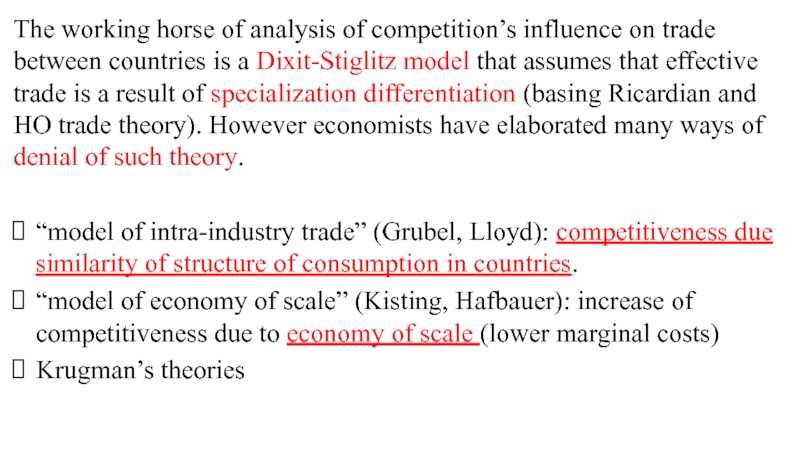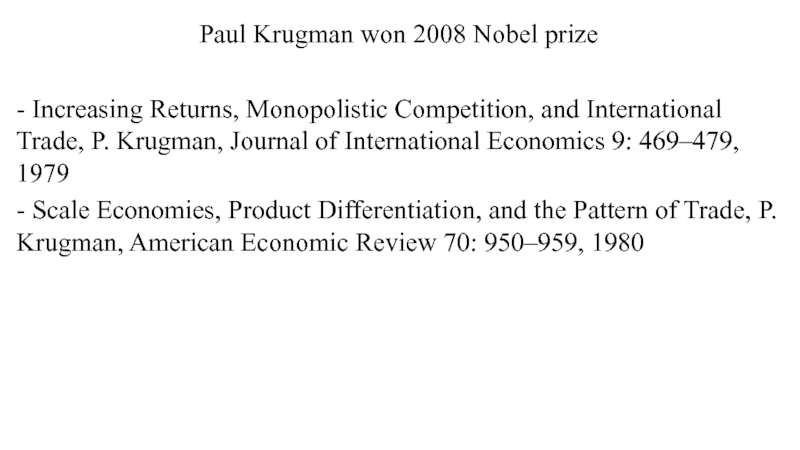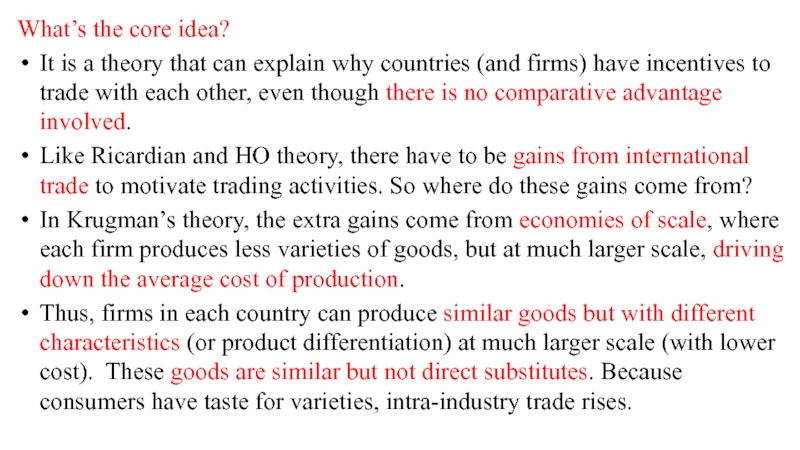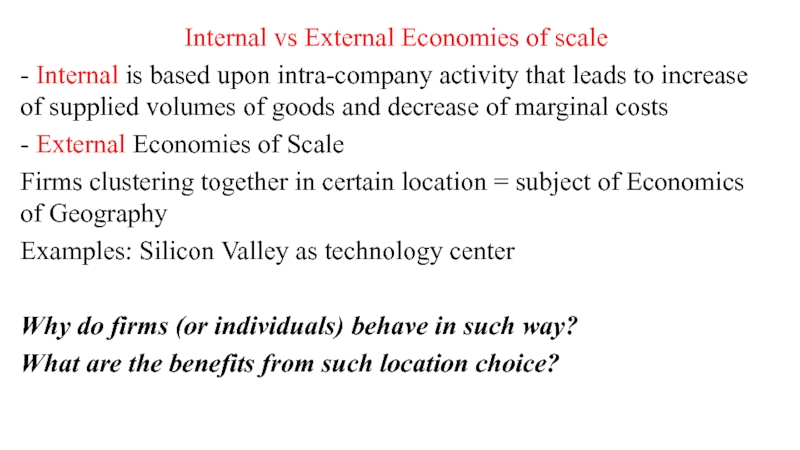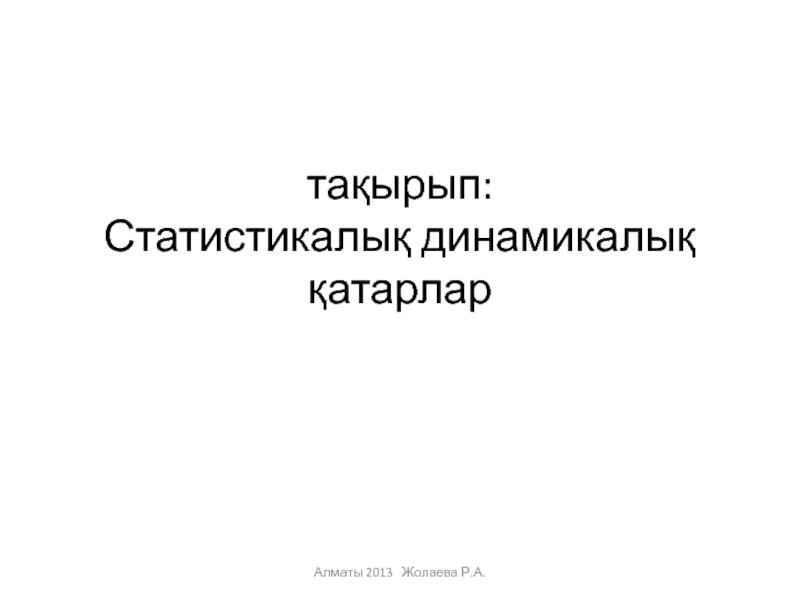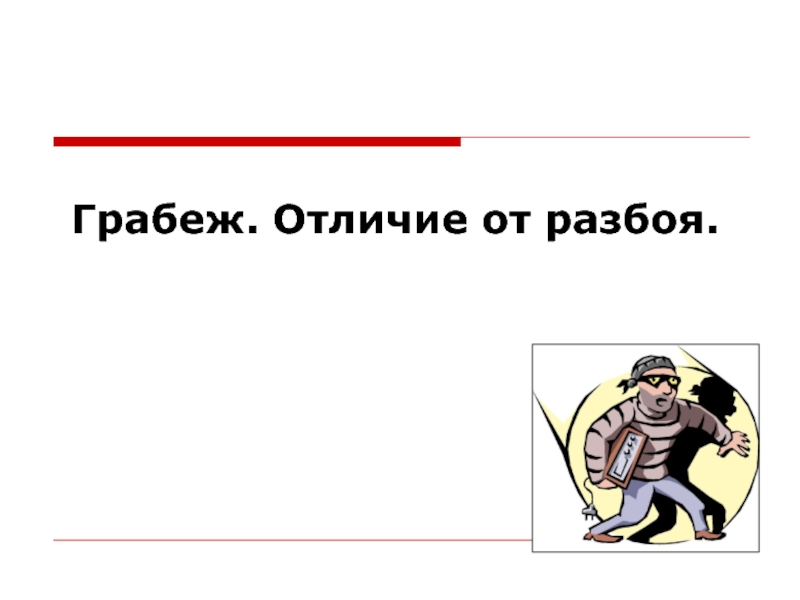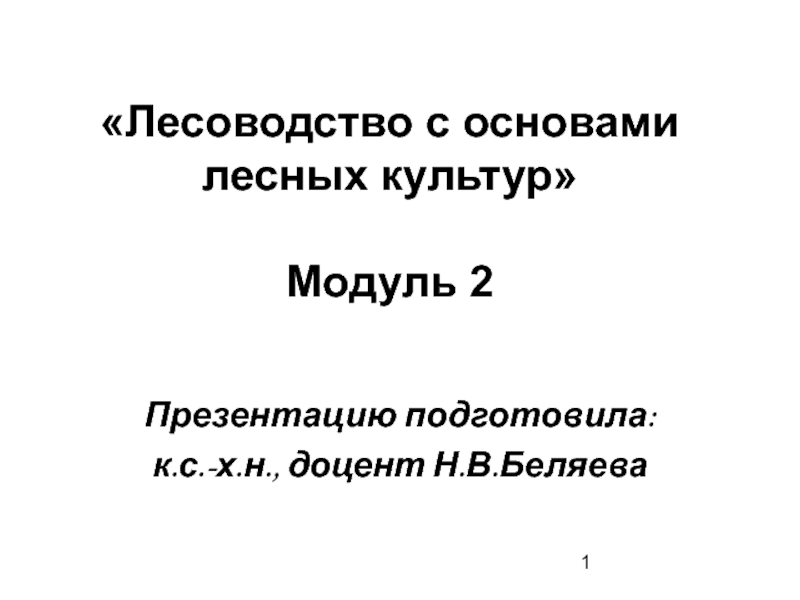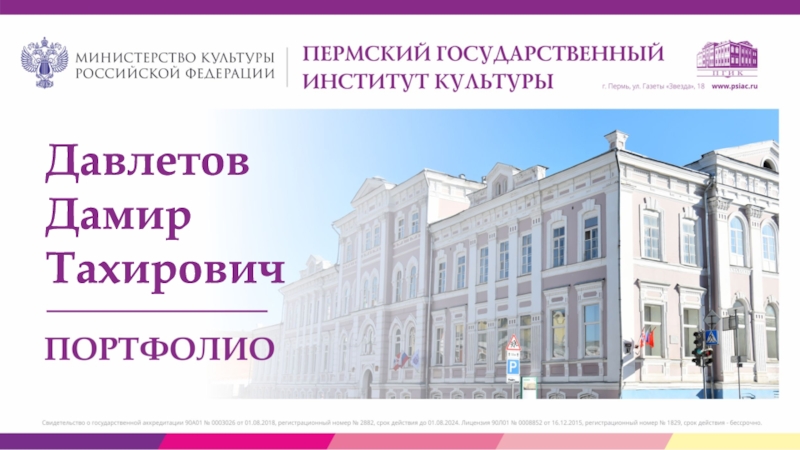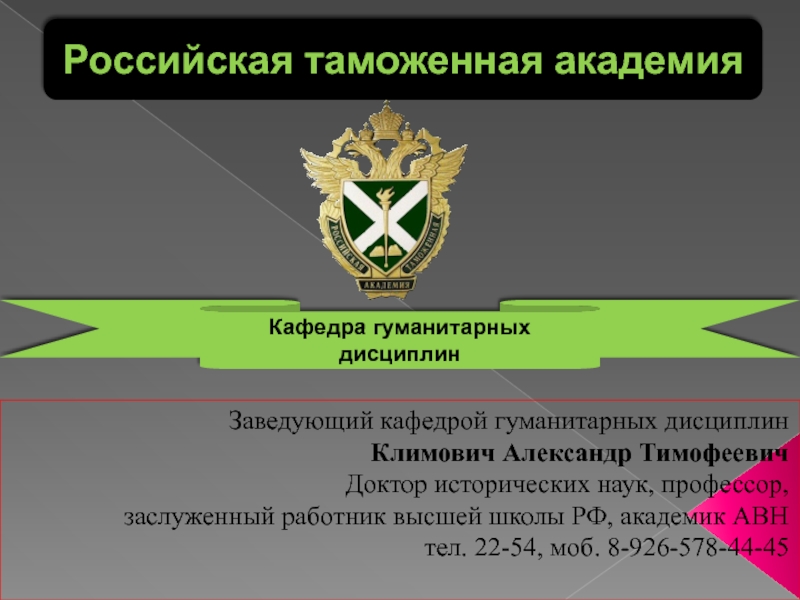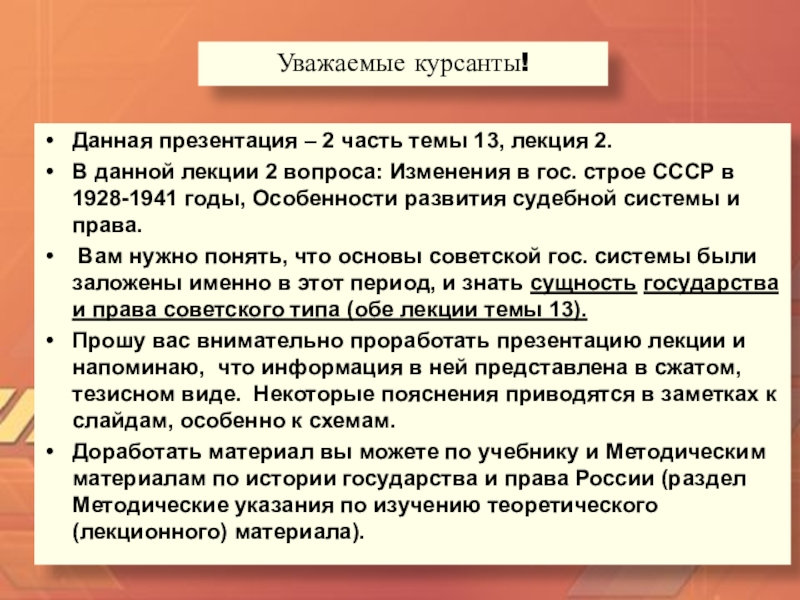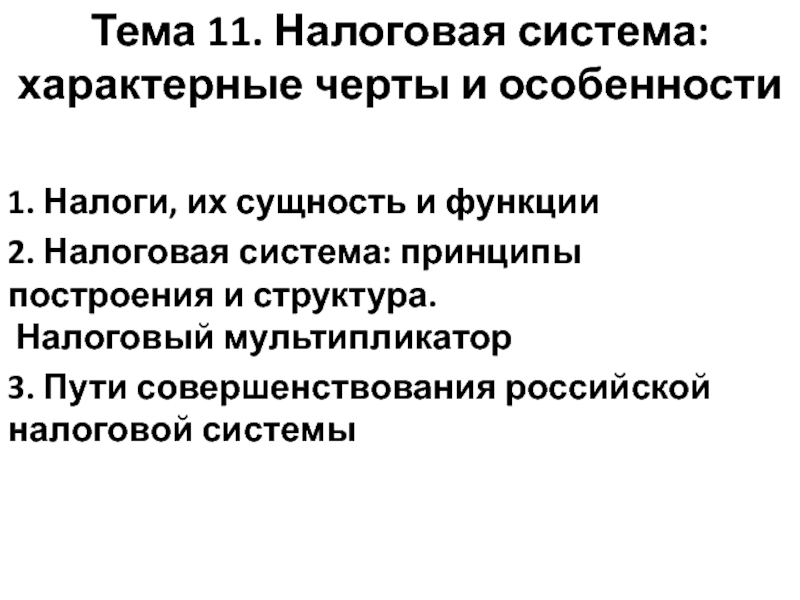Слайд 1Topic 2: Competition
and its place in
international trade
Слайд 2Typical models of international imperfect competition
Models of international monopolistic
competition
intra-industry competition (economy of scale) Krugman, Dixit-Stiglitz, Cournout
inter-industry competition
(product differentiation)
spacial competition (difference in transportation costs)
2. Models of international oligopolistic competition (for duopoly)
international leadership on the amount of goods
international leadership on prices
international cartel (negative consequences)
Слайд 33. Models of pure international monopoly
monopoly of national company on
national market
monopoly of national company on national market and in
export
monopoly of national company on internal market but competition in export
foreign company has monopoly positions on internal market
Слайд 4International trade models and imperfect competition
HO model, Leontiev paradox (competition
in result of difference between production factors)
Neotechnological models: comparative advantage
from product differentiation (rises from production factors)
“technological lag” of Pozner: comparative advantage of countries which have innovations. During time country loses such advantage.
“model of product life cycle” of Pozner: same comparative advantage which appears only on stages of technology introduction and fast growth of company
Слайд 5The working horse of analysis of competition’s influence on trade
between countries is a Dixit-Stiglitz model that assumes that effective
trade is a result of specialization differentiation (basing Ricardian and HO trade theory). However economists have elaborated many ways of denial of such theory.
“model of intra-industry trade” (Grubel, Lloyd): competitiveness due similarity of structure of consumption in countries.
“model of economy of scale” (Kisting, Hafbauer): increase of competitiveness due to economy of scale (lower marginal costs)
Krugman’s theories
Слайд 6Intra-industry imperfect competition
Intra-industry trade accounts for about ¼ of world
trade
Mostly in manufacturing goods among advanced industrial economies. Not
between developed and developing countries as Ricardian and HO models would predict.
And mostly within the same industry with no difference in their comparative advantage
Слайд 7Paul Krugman won 2008 Nobel prize
- Increasing Returns,
Monopolistic Competition, and International Trade, P. Krugman, Journal of International
Economics 9: 469–479, 1979
- Scale Economies, Product Differentiation, and the Pattern of Trade, P. Krugman, American Economic Review 70: 950–959, 1980
Слайд 8What’s the core idea?
It is a theory that can
explain why countries (and firms) have incentives to trade with
each other, even though there is no comparative advantage involved.
Like Ricardian and HO theory, there have to be gains from international trade to motivate trading activities. So where do these gains come from?
In Krugman’s theory, the extra gains come from economies of scale, where each firm produces less varieties of goods, but at much larger scale, driving down the average cost of production.
Thus, firms in each country can produce similar goods but with different characteristics (or product differentiation) at much larger scale (with lower cost). These goods are similar but not direct substitutes. Because consumers have taste for varieties, intra-industry trade rises.
Слайд 9Internal vs External Economies of scale
- Internal is based
upon intra-company activity that leads to increase of supplied volumes
of goods and decrease of marginal costs
- External Economies of Scale
Firms clustering together in certain location = subject of Economics of Geography
Examples: Silicon Valley as technology center
Why do firms (or individuals) behave in such way?
What are the benefits from such location choice?
Слайд 10External Economies of Scale
Sources of gains:
Specialized suppliers
Labor
market pooling
Knowledge spillovers
What are the key differences between
internal and external economies of scale?
Internal gains come from larger market scale because there is a initial fixed cost, implying that the larger the scale, the more efficient (or less costly) they can produce.
External gains are not from within the firm; rather, they are from the externalities generated from firms clustering together.
Слайд 11Impact of External Economies of Scale
It could have similar
effects as internal economies of scale:
The clustering of
firms will bring down the cost of production: easy access to suppliers and labor pool
Technology spillovers could spur innovation, another way of bringing down cost
In addition, firm clustering tends to reinforce specialization choices at the beginning, which may have some unintended consequences.
Слайд 12Switzerland watch industry
Switzerland specializes in watch making due to
mysterious unknown historical/cultural reasons. But in short, they are good
at making watches.
Over time, as income of Switzerland rises, their cost of watch making is also rising.
But because of their early specialization in watch industry and the external scale of economies generated from this long-time watch making (learning curve), it makes new competitor’s entry into the market very difficult.
And the world may face a welfare loss as a result of trade
